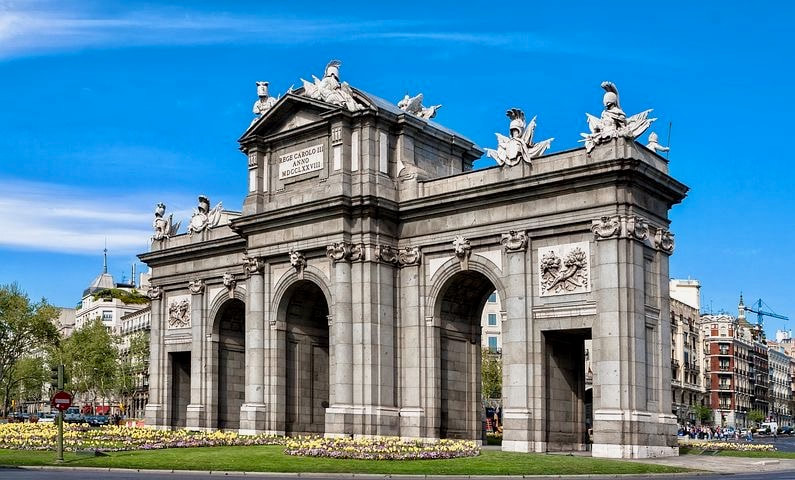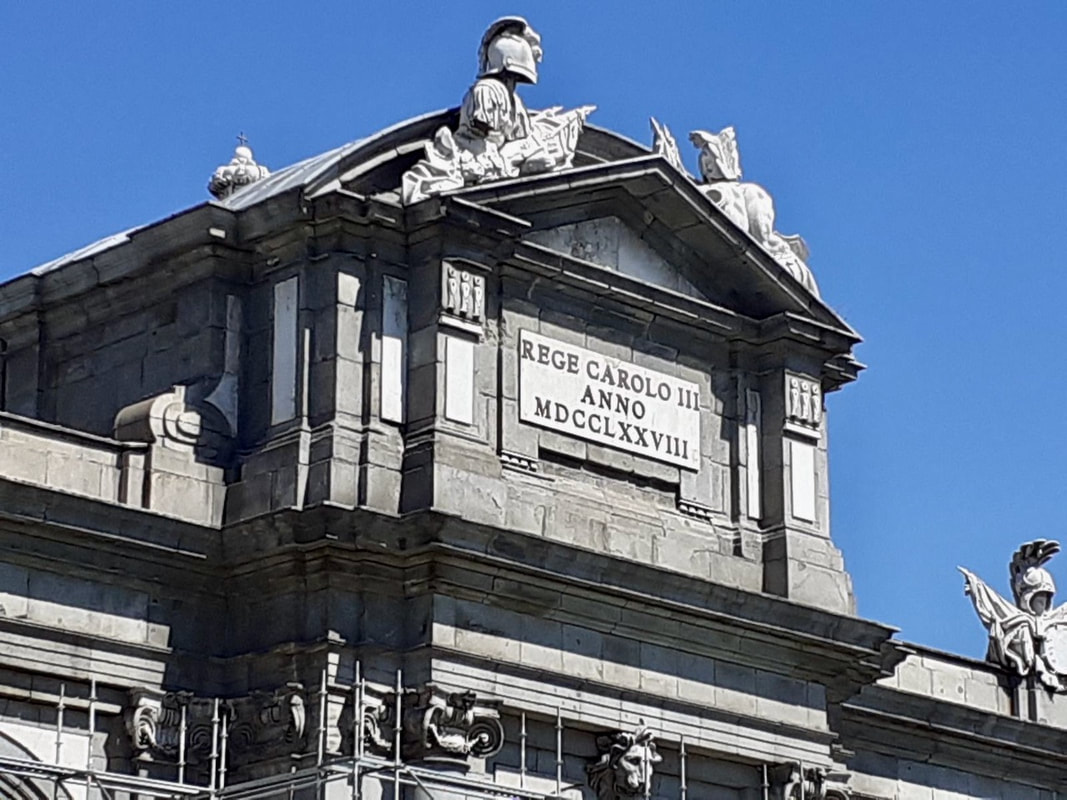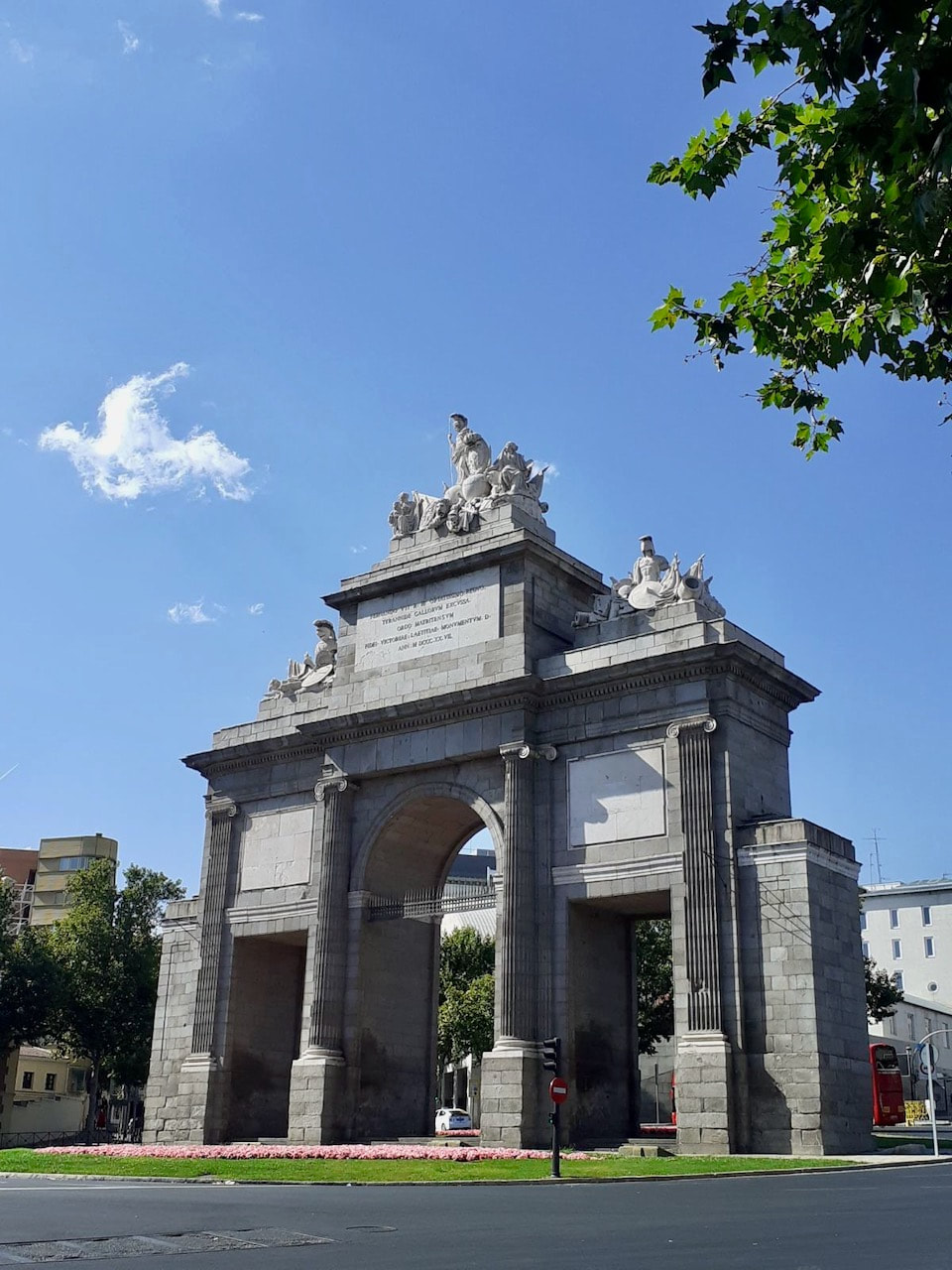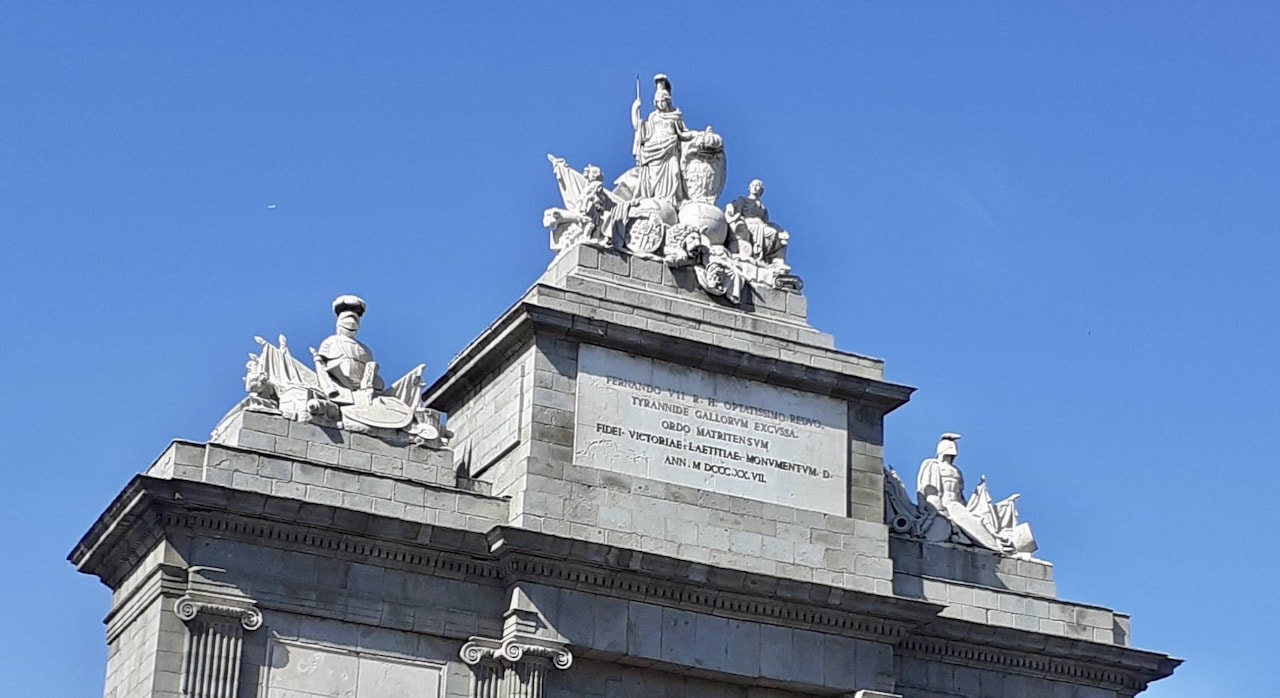Puertas de Alcala and Toledo:Time Travels in Madrid
Written by Sr. Sylvia Jopillo,r.a.
Like any old city, Madrid is full of architectural and historical marvels. From grandiose palaces to imposing gates, majestic cathedrals to tiny Roman chapels, ornate century-old facades to modern glass skyscrapers. All these co-exist on the city landscape like an ongoing series of paintings with layers of cross-cultural and multi-temporal imagery.
Walking along the city is the best way to discover the portal into a layer and enter another time. Visits to the monumental gates of Alcalá and Toledo offer these rare chances to travel in time.
Walking along the city is the best way to discover the portal into a layer and enter another time. Visits to the monumental gates of Alcalá and Toledo offer these rare chances to travel in time.
The Puerta de Alcalá (Alcalá Gate) was designed by Francesco Sabatini and completed in 1778 under the orders of the Spanish King Charles III to celebrate his triumphal arrival at the capital.
It is made of granite and limestone and imposing, spanning 43 meters and 23 meters high. It stands near the city center at the Plaza de la Independencia and is a stone's throw away from the Parque del Buen Retiro.
Several streets bisect the gate. The most notable is Calle Alcalá, one of the oldest and longest streets of the city, although, at present, no road passes through the gate.
Calle Alcalá leads to the city of Alcalá de Henares (from which both the gate and the street got their names) to the northeast, which continues to Aragón, a medieval kingdom that now forms part of Spain.
During medieval times, the road passed through the gate and transited carriages, soldiers, carts, and livestock from the nearby towns into Madrid. Sitting on a Terraza fronting the gate, one imagines the noise and dust generated by the medieval traffic passing through the gate and into the walled city.
It is made of granite and limestone and imposing, spanning 43 meters and 23 meters high. It stands near the city center at the Plaza de la Independencia and is a stone's throw away from the Parque del Buen Retiro.
Several streets bisect the gate. The most notable is Calle Alcalá, one of the oldest and longest streets of the city, although, at present, no road passes through the gate.
Calle Alcalá leads to the city of Alcalá de Henares (from which both the gate and the street got their names) to the northeast, which continues to Aragón, a medieval kingdom that now forms part of Spain.
During medieval times, the road passed through the gate and transited carriages, soldiers, carts, and livestock from the nearby towns into Madrid. Sitting on a Terraza fronting the gate, one imagines the noise and dust generated by the medieval traffic passing through the gate and into the walled city.
The neoclassical gate has a central arch balanced by two minor lateral arches. It is known as the entrance gate to Madrid.
The gate's soaring design includes sculptures celebrating themes of reason, arms, flags, and cornucopias, signifying abundance. The most significant symbol is the shield of Spain. The sounds of vehicular traffic circulating the Alcalá gate wake me to the present.
This gate, which is older than Paris' Eiffel Tower and Berlin's Brandenburg Gate, now sits in a manicured garden with flowers and grass. It is a must-see monument in a city filled with historical portals.
The gate's soaring design includes sculptures celebrating themes of reason, arms, flags, and cornucopias, signifying abundance. The most significant symbol is the shield of Spain. The sounds of vehicular traffic circulating the Alcalá gate wake me to the present.
This gate, which is older than Paris' Eiffel Tower and Berlin's Brandenburg Gate, now sits in a manicured garden with flowers and grass. It is a must-see monument in a city filled with historical portals.
Puerta de Alcala in Madrid
A smaller but less important gate is the Puerta de Toledo leading south towards Toledo and Andalucia. It is also neoclassical and designed by Spanish architect Antonio Aguado as an arch of triumph in honor of King Ferdinand VII to commemorate the independence of Spain from the French occupation.
The present gate's construction was started in 1813 and completed in 1827. It is the last monumental gate erected around the medieval environs of Madrid.
The present gate's construction was started in 1813 and completed in 1827. It is the last monumental gate erected around the medieval environs of Madrid.
The gate has a central arch and two smaller lateral gates made of granite and limestones. The locals humorously call it an elephant compared to the soaring lines of the Alcalá gate. But its design is no less impressive.
Facing to the north, its crowned with classical sculptures of two boys sustaining the shield of Madrid. On its lateral doors lie the various military trophies facing south together with a symbolic figure of Spain as a woman in the center. The inscription also honors King Ferdinand VII, dedicating the gate to the crown.
Livestock transit went into medieval Madrid and hurling back into the 19th century, only through the Toledo gate. However, as Madrid expanded, the gate became part of the city landscape and lost its character as its main gateway.
It is an important monument for its historical value and proximity to the Rastro de Madrid (the famous flea market) and the Mercado Puerta de Toledo. No vehicles nor persons pass through the gate arches; flower beds and trimmed lawns are around it.
Facing to the north, its crowned with classical sculptures of two boys sustaining the shield of Madrid. On its lateral doors lie the various military trophies facing south together with a symbolic figure of Spain as a woman in the center. The inscription also honors King Ferdinand VII, dedicating the gate to the crown.
Livestock transit went into medieval Madrid and hurling back into the 19th century, only through the Toledo gate. However, as Madrid expanded, the gate became part of the city landscape and lost its character as its main gateway.
It is an important monument for its historical value and proximity to the Rastro de Madrid (the famous flea market) and the Mercado Puerta de Toledo. No vehicles nor persons pass through the gate arches; flower beds and trimmed lawns are around it.



